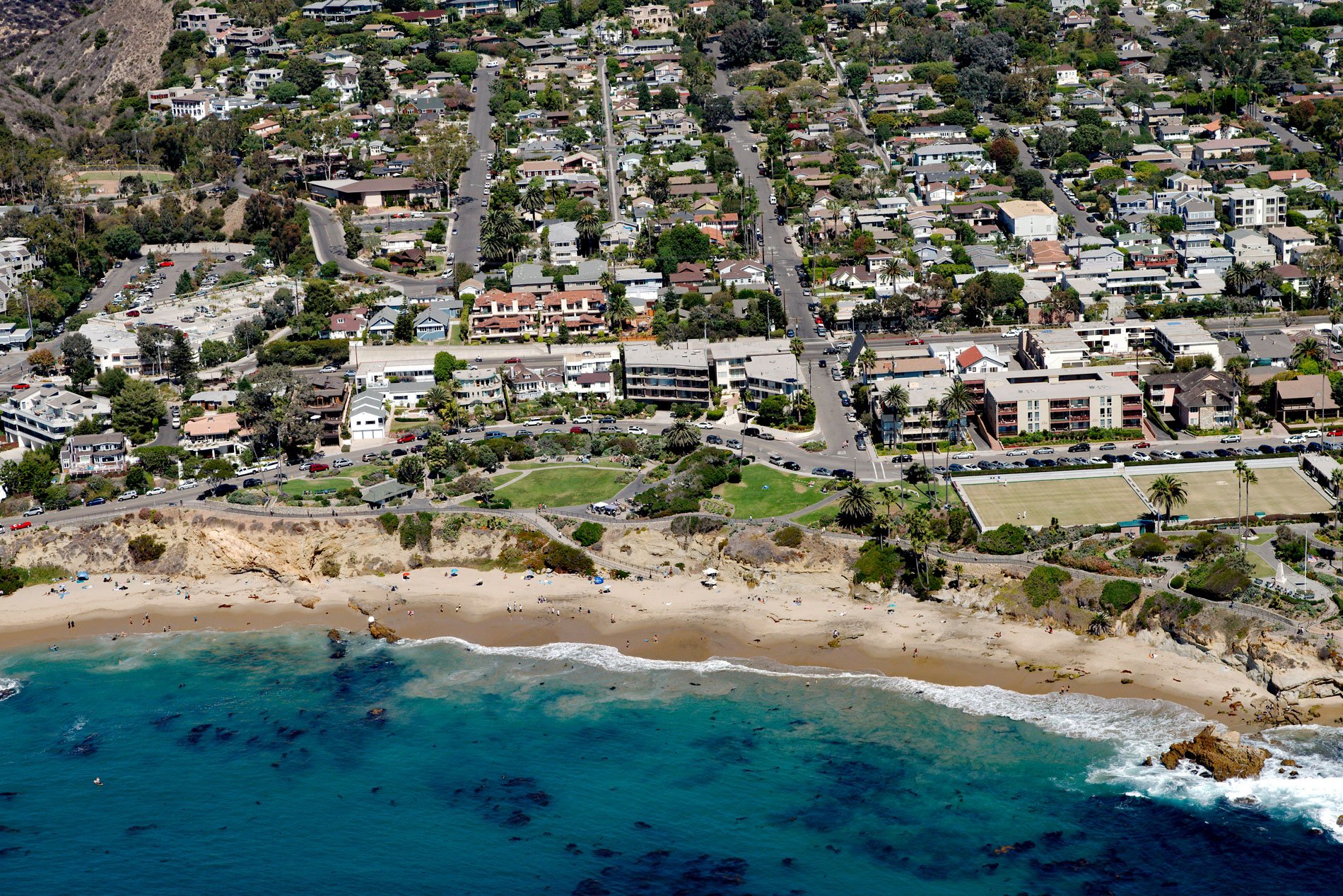Divers Cove is a small embayment with a beach at the west end of Heisler Park, about 9.3 miles (15 km) southeast of Newport Beach and 0.7 miles (1.1 km) northwest of Laguna Beach, California. The cove is named for the popular reefs just offshore and accessible to divers. The rocky point on the northwest end of the beach provides some protection from the west for swimmers although strong currents are often present. At high tide, the beach can be entirely submerged.
Laguna Beach is a seaside resort community known for a mild year-round climate, scenic coves, environmental preservation, and an artist community. The area was historically settled by the Tongva people, followed by Mexico, but the majority of Laguna Beach was one of the few parcels of coastal land in Southern California that was not included in any Mexican land grant. The community of Laguna Beach was settled in the 1870s and officially founded in 1887. The city has remained relatively isolated from urban encroachment by its surrounding hills and limited highway access. The Laguna Beach coastline is protected by 5.88 miles (9.46 km) of state marine reserve and an additional 1.21 miles (1.95 km) of state conservation area.
Laguna Beach State Marine Reserve and Laguna Beach State Marine Conservation Area are two adjoining marine protected areas that extend offshore from the coast. These two marine protected areas prohibit or limit the removal of marine wildlife from within its borders. The new marine protected areas were designed by local divers, fishermen, conservationists, and scientists who comprised the South Coast Regional Stakeholder Group. Read more here and here. Explore more of Divers Cove here:

